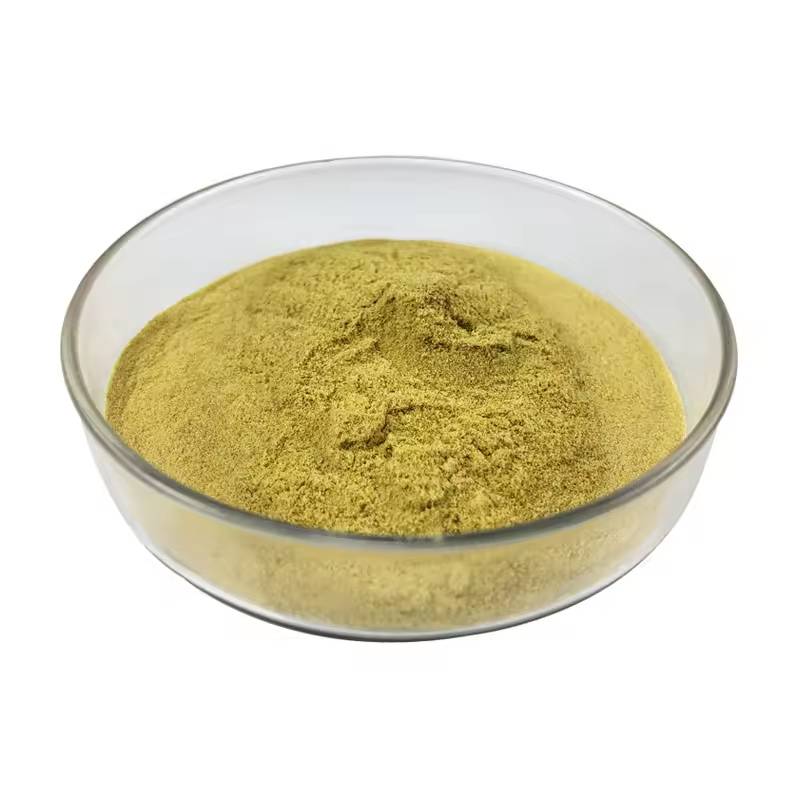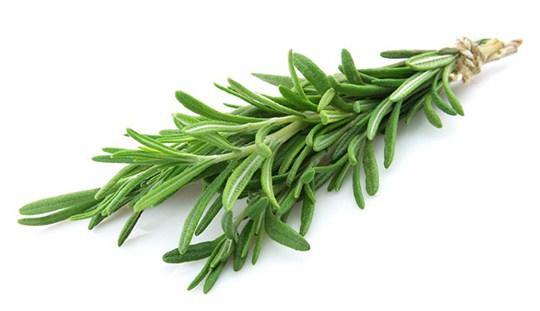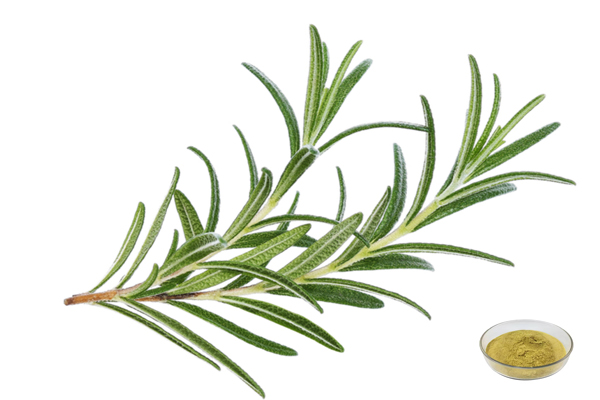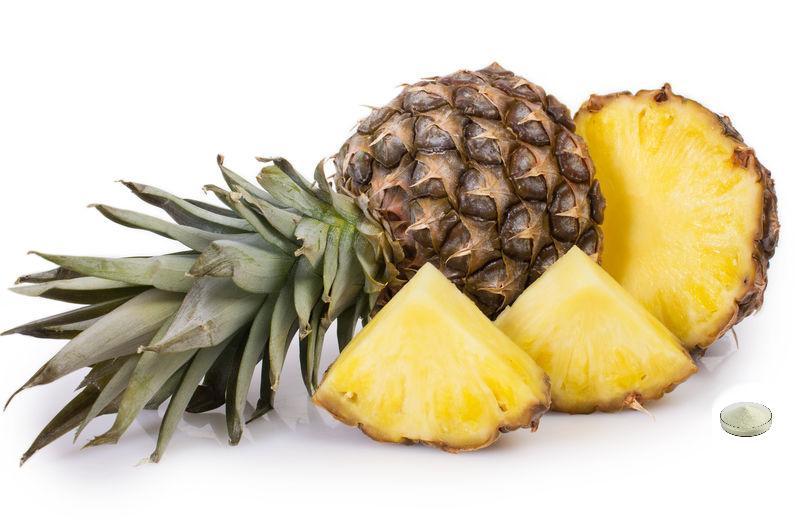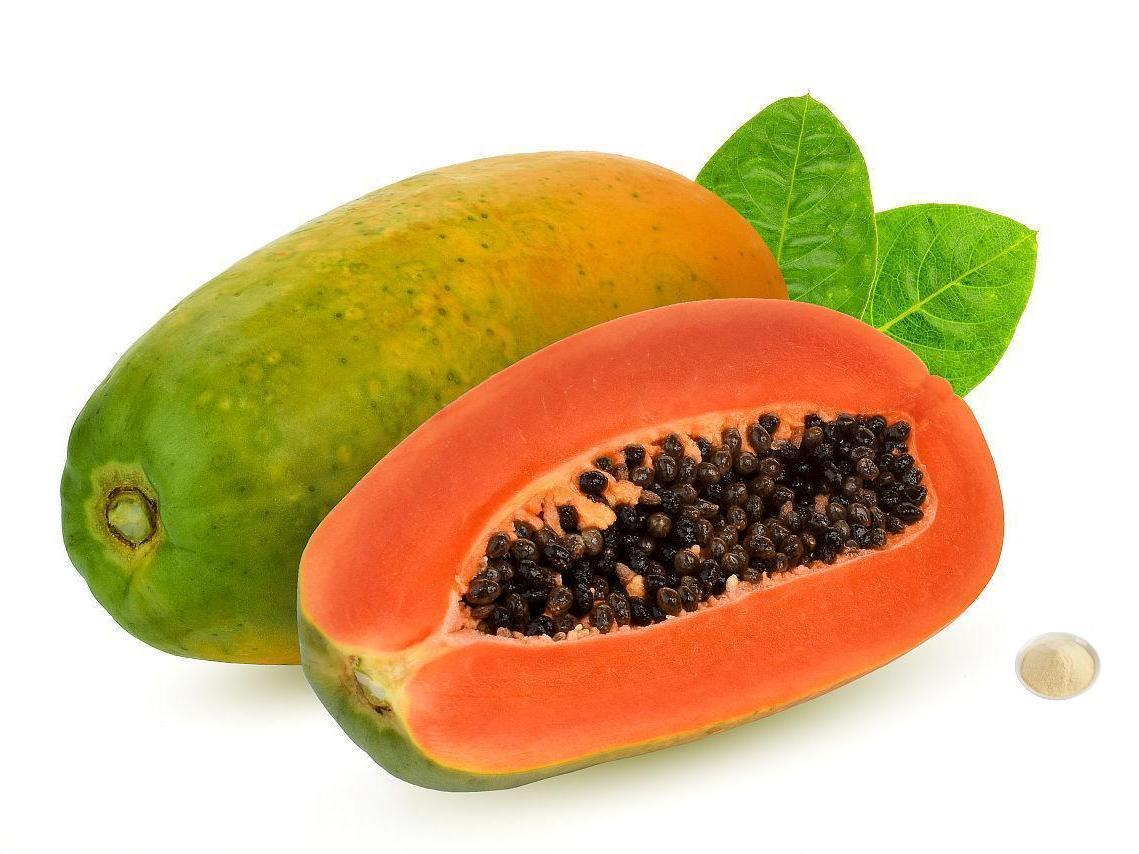Extracto de romero ácido rosmarínico al 50% por HPLC
Fuente: hoja de romero
Principio activo: ácido rosmarínico
Ensayo :50%
Método de ensayo :HPLC
Aspecto: polvo amarillo claro
Residuos de plaguicidas: cumplir con la norma (CE) n º 396/2005
- descripción
- Hoja de datos
- Certificado de certificado
-
¿Qué es el extracto de romero ácido rosmarínico?
El ácido rosmarínico es un compuesto ácido fenónatural condensado del ácido cafey del ácido lác3,4-dihidroxifenilo. El ácido rosmarínico está ampliamente distribuido y es especialmente común en las familias de las Comfrey, Labiatae y Cucurbitaceae. Los químicos italianos primero extrajeron y aislaron del romero Rosmarinus officinalis Linn y lo nombraron ácido rosemarínico. Como un importante antioxidante polifenó, el ácido rosemarínico tiene muchas aplicaciones en alimentos y cosméticos y es excelente anti-inflamatorio, antibacteri, anticanceroso, y otras actividades farmacológicas.
Extracto de romero Rosmarinic Acid is a water-soluble natural phenolic acid obtained from rosemary, family Labiatae. It is a natural, efficient, stable, heat-resistant, safe, non-toxic, with no side effects, water-soluble antioxidant, and green food additive.
Extracto de romero ácido rosmarínico al 50% por HPLC suministrado por verde Spring Technology selecciona hojas de romero frescas; Utilizando un mortero, un clavo u otras herramientas adecuadas, se rompe en partículas finas para aumentar la eficiencia de extracción; Las hojas de romero trituradas se sumergen con un solvente orgánico, y a través de la extracción con solvente, el ácido rosemarínico se extrae de los tejidos de la planta. Disolver. Luego el disolvente es recuperado del extracto por la tecnología de destilación, dejando una solución que contiene ácido rosemarínico, y finalmente, el ácido rosemarínico es purificado del extracto por la tecnología de cristalización, eliminando otras impurezas y obteniendo ácido rosemarínico de alta pureza.
Green Spring Technology has an excellent R&D team, an independent testing laboratory an experienced production team, a rigorous internal quality control process, and organizes production under ISO, HACCP, and other quality standards. All of the products we offer implement the highest international industry standards, complying with EU EC396, EU 2023/915 standards, and the highest solvent residue standards. We have passed Halal, Kosher, COSMOS, BRC, IFS, FDA, ISO, and many other certifications.
Especificaciones:
Nombre del producto
Rosemary Extract
Nombre latino
Rosmarinus officinalis L.
CAS No.
20283-92-5
fuente
Hoja de romero
Principios activos
Ácido rosmarínico
especificación
50%
Método de ensayo
HPLC
apariencia
Polvo de color amarillo claro
Residuos de plaguicidas
Cumplir con la norma (CE) n º 396/2005
Reglamento:
Se ajusta a la normativa de la UE.
¿Busca un presupuesto?Benefits:
Anti-inflammatory
Numerous studies have demonstrated that rosemary extract rosemarinic acid has favorable anti-inflammatory effects. Complement activation usually occurs at sites of inflammation, and rosemarinic acid can covalently bind to the active complement substance C3b and thus inhibit complement activity without side effects. Cyclooxygenase-2 (COX-2) is a dangerous inflammatory factor, Scheckel et al. found that rosemarinic acid could inhibit the expression of the COX-2 gene in colon cancer cells and benign breast epithelial cells, and Lembo et al. demonstrated that rosemarinic acid could prevent medium-wave ultraviolet radiation-induced damage and reduce tumorigenicity in human keratinocyte cell lines. Inflammatory mediators such as tumor necrosis factor-α (TNF-α), IL-6, IL-8, and monocyte chemotactic protein 1, and promoted the production of protective IL-10.
Antibacterial
The antibacterial and antiviral properties of rosemary extract rosemarinic acid inhibit acute confusing infections and chronic infections, are resistant to UV rays, and inhibit the degradation of elastin; all of which make it an excellent natural additive to skin care products.
Anti-microbial
Rosemary extract rosemarinic acid has a certain inhibitory effect on bacteria, rosemarinic acid 500 mmol/L can inhibit staphylococci, and the inhibitory activity is affected by pH and ionic concentration. Abedini et al. found that rosemarinic acid 0.3-1.3 mg/mL inhibited Staphylococcus aureus 5001, Staphylococcus luttunensis T26A3, Staphylococcus maltophilus narrow-feeding monocytes, Enterococcus faecalis C159-6, Pseudomonas aeruginosa ATCC27583, Corynebacterium roqueforti, Mycobacterium smegmatis 5003, and Staphylococcus wolffii T12A12.
Rosemarinic acid inhibits Escherichia coli, Staphylococcus aureus, Salmonella, and Bacillus subtilis by destroying the cellular structure and proteins of the bacteria and inhibiting the Na+, K+-ATPase activity of the bacteria and the inhibition varies among different bacteria. In addition, rosemarinic acid has antiviral effects. Under acidic conditions, rosemarinic acid reacts with nitrite ions to give 6-nitro and 6,6-dinitro rosemarinic acids. These compounds acted as human immunodeficiency virus-1 integrase inhibitors at the micromolar level, inhibited viral replication in human T-cell leukemia MT-4 cells, and improved anti-integrase inhibition and antiviral effects.
Applications:
In the Food Field:
Rosemary Extract Rosemarinic acid, as a natural and highly effective antioxidant, can be used as a substitute for BHA and BHT in animal and vegetable fats and oils, dairy products, oil-enriched foods, confectionery, and baked goods; it can also be used as a spice for a variety of soups and flavored foods; and it has antiseptic and antimicrobial effects. In Japan, perilla extract, which is rich in rosemarinic acid, is used as a garnish to improve the shelf life of fresh seafood.
For Feed Product:
In animal husbandry, rosmarinic acid can be used as a feed additive to improve the antioxidant properties and stability of feed, thereby increasing animal performance and health.
In Pharmaceutical:
Rosemary Extract Rosemarinic acid has some antibacterial and anti-inflammatory properties and therefore has some applications in medicine, especially being used in traditional herbal medicine and some herbal preparations.
In Cosmetics:
Rosemary acid can be used in skin care products to dispel pigmentation, antioxidant, increase skin elasticity, delay aging and other effects; used in shampoo hair care products, can promote scalp blood circulation, improve hair loss, reduce the occurrence of dandruff, and stimulate the growth of hair, moisturizing hair. Therefore, rosemary extract rosemarinic acid can be used as an excellent additive in cosmetics.
-
descargar
Extracto de romero de ácido rosmarínico al 50% por HPLC COA


 inglés
inglés francés
francés español
español ruso
ruso coreano
coreano Japonés japonés
Japonés japonés



